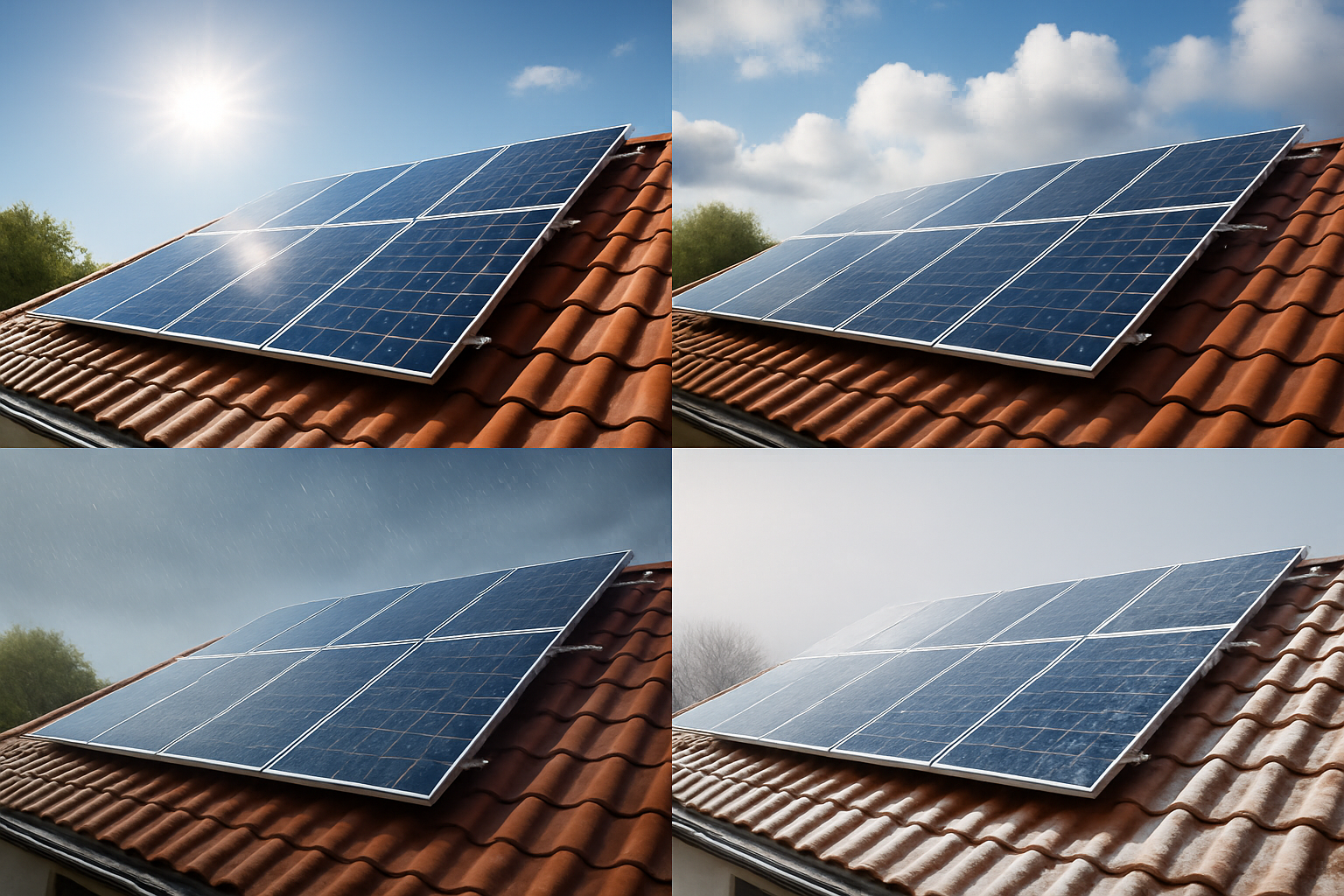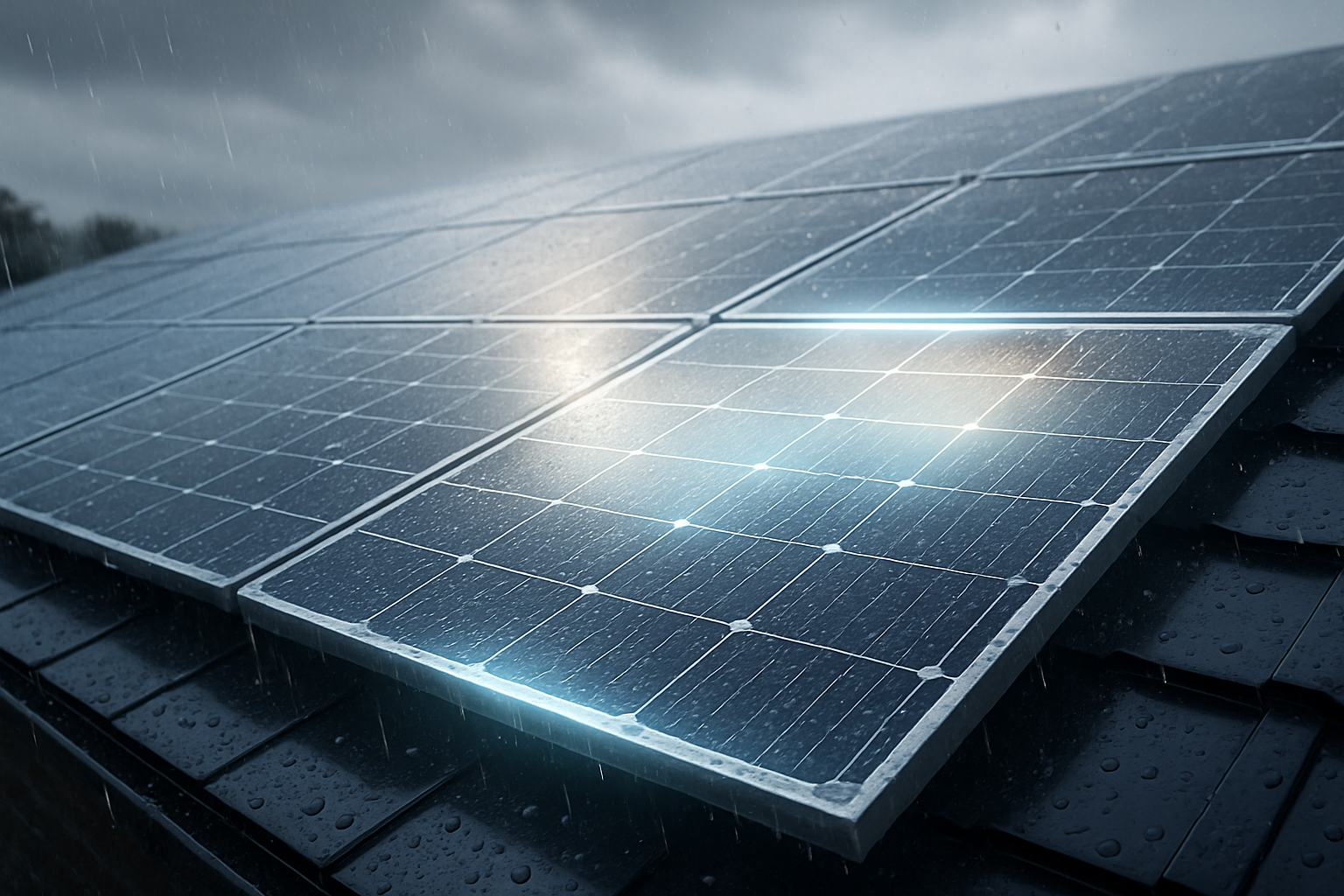Harnessing solar power offers a path to energy independence, yet many wonder about its performance during different seasons and weather conditions. Your solar energy system's output naturally varies throughout the year. This discussion clarifies how factors like sunlight intensity, temperature, and cloud cover influence electricity generation, helping you maximize your solar investment.
Solar Performance in Winter
Winter brings shorter daylight hours and a lower sun angle, impacting solar panel output. Despite these changes, your panels continue to generate electricity. Cold temperatures, surprisingly, can enhance panel efficiency. Solar panels generally perform better in cooler conditions because lower temperatures reduce electrical resistance within the photovoltaic cells. However, the reduced hours of sunlight and the sun's lower position in the sky are more significant factors in overall energy production.
Impact of Sunlight Angle and Duration
During winter, the sun travels a lower arc across the sky. This means sunlight strikes your panels at a less direct angle for a shorter period each day. While panels still capture sunlight, the intensity is lower compared to summer months. For panels facing the equator, increasing their tilt can boost winter output, though this might slightly decrease summer production.
Snow Accumulation and Mitigation
Snowfall presents a direct challenge to solar output by physically blocking sunlight. Even a thin layer of snow can significantly reduce or halt production. Fortunately, solar panels are often installed at an angle, allowing snow to slide off. You can also consider gently removing snow if it accumulates heavily. For homes and farms utilizing off-grid solar solutions, integrating a robust lithium battery energy storage system becomes vital during these periods to ensure a continuous power supply.
Solar Performance During Monsoon and Cloudy Weather
Cloudy or rainy days, common during monsoon seasons, lead to questions about solar panel effectiveness. While direct sunlight is ideal, solar panels are designed to capture diffuse light that penetrates cloud cover. Your system will still generate power, albeit at a reduced rate.
Understanding Diffuse Light
Clouds scatter sunlight, turning direct rays into diffuse light. Solar panels can convert this scattered light into electricity. The extent of reduction depends on the cloud's thickness and density. For instance, a light overcast day will yield more power than a day with heavy, dark storm clouds. The variability of solar PV output includes both predictable patterns from planetary motion and irregular components from atmospheric phenomena like clouds, fog, or snow.
The Role of Solar Forecasting
Predicting solar generation on cloudy days can be complex. Tools like the Solar Forecasting Platform (SFA), supported by the U.S. Department of Energy, help grid operators assess the reliability of solar generation estimates over short periods and the likelihood of predicted power outputs. This technology assists in better integrating renewable energy into the grid and can help you anticipate your system's performance, especially when paired with a home energy storage system.

Solar Performance in Summer
Summer offers the longest daylight hours and the most intense sunlight, leading to peak solar energy production. This is when your solar panels receive the most direct exposure, maximizing their output. However, high temperatures can also influence efficiency.
Temperature and Efficiency
While more sunlight means more power, solar panel efficiency can slightly decrease as temperatures rise significantly above 25°C (77°F). This is because the semiconductor material in the panels becomes less efficient at converting light into electricity at higher temperatures. Typically, efficiency might drop by about 0.3% to 0.5% for every degree Celsius above this optimal temperature. This effect is usually minor compared to the gains from increased sunlight hours.
Maximizing Summer Output
To ensure optimal summer performance, proper ventilation around the panels helps dissipate heat. Regular cleaning also prevents dust and pollen buildup, which can obstruct sunlight and reduce efficiency. Integrating a high-performance solar inverter ensures that the direct current (DC) electricity generated by your panels is efficiently converted into usable alternating current (AC) for your home or for storage in your lithium battery system.
Optimizing Seasonal Solar Output
Understanding seasonal variations allows for better planning and system optimization. Thoughtful design and the right accompanying technologies ensure you gain the most from your solar investment year-round.
Advanced Tracking Systems
For systems where maximizing output is paramount, tracking systems can be a valuable addition. These systems automatically adjust the angle of your solar panels to follow the sun's path throughout the day. Single-axis trackers can increase electricity production by 12-25% in areas with high sun exposure, while dual-axis tracking can provide an additional 10-15% yield. While these systems come with higher installation and maintenance costs, the increase in generation can be substantial.
The Role of Energy Storage
Energy storage is a cornerstone of resilient solar systems, especially when managing seasonal variability. A high-performance home energy storage system, featuring reliable LiFePO4 batteries, captures excess electricity generated during peak production times (like sunny summer days) for use during periods of lower output (such as winter evenings or cloudy days). This capability significantly enhances your energy independence, providing power when you need it most, regardless of weather conditions. Our integrated ESS solutions combine lithium batteries, hybrid inverters, and solar panels to create a seamless energy ecosystem for your home.
Seasonal Performance Overview
The table below provides a simplified overview of how different seasons generally impact solar panel output and key considerations for each:
| Season | Sunlight Hours | Sun Angle | Temperature Impact | Common Challenges | Optimization Strategy |
|---|---|---|---|---|---|
| Winter | Shortest | Lowest | Slightly improved efficiency (due to cold), but overall lower output | Snow cover, reduced daylight | Adjust tilt, snow removal, robust energy storage |
| Monsoon/Cloudy | Variable | Variable | Minimal direct temperature effect | Heavy cloud cover, rain | Leverage diffuse light, energy storage, solar forecasting |
| Summer | Longest | Highest | Slightly reduced efficiency (due to heat), but highest overall output | High temperatures, dust accumulation | Ensure ventilation, regular cleaning, efficient inverters |
Achieving Energy Resilience
Your solar energy system is a dynamic asset, adapting to the changing rhythms of nature. By understanding how different seasons and weather conditions affect solar output, you can make informed decisions about your system's design and management. Whether you are looking for a complete home energy storage system, a reliable off-grid solution for your farm, or simply a high-quality solar inverter, focusing on robust, scalable energy solutions will help you achieve true energy independence and a sustainable future.





Leave a comment
All comments are moderated before being published.
This site is protected by hCaptcha and the hCaptcha Privacy Policy and Terms of Service apply.